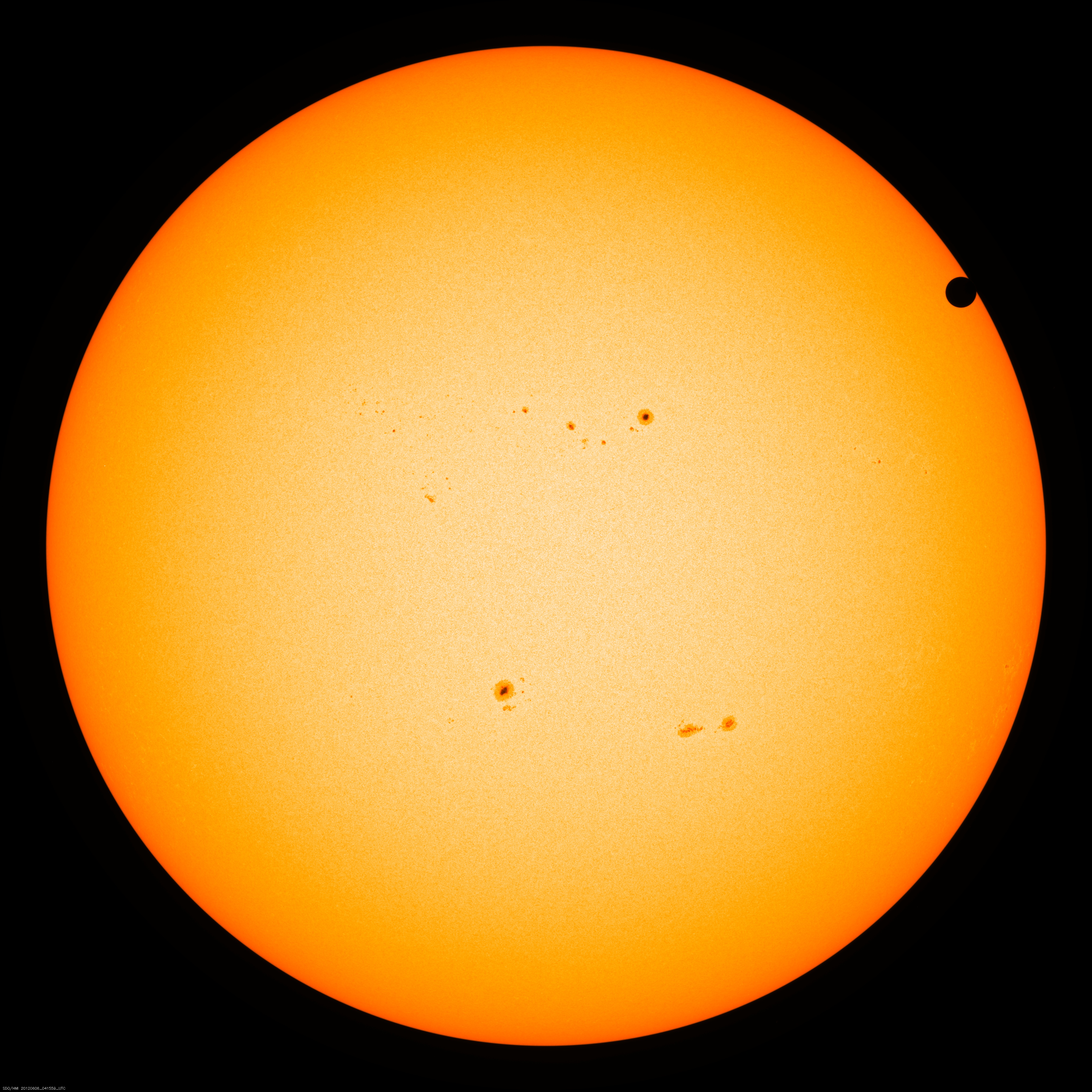by Erich Karkoschka
 Mercury becomes visible below Venus after May 12th. It rapidly moves past venus on the 21st and will be easily observable well into June. May 21st, Venus (-4.4 magnitude) & Mercury (-.6 magnitude) have a conjunction (very close together), visible about 1 hour after sunset. On May 24th a two-day old Moon join the pair.
Mercury becomes visible below Venus after May 12th. It rapidly moves past venus on the 21st and will be easily observable well into June. May 21st, Venus (-4.4 magnitude) & Mercury (-.6 magnitude) have a conjunction (very close together), visible about 1 hour after sunset. On May 24th a two-day old Moon join the pair.
 Venus is maximum brightness at the beginning of the month and becomes visible before sunset about 45 degrees high. It can even be seen during the afternoon if you know where to look. For example just before 3 pm, look 86 degrees high, essentially overhead. It reverses its prograde motion on the 13th near Elnath and then moves rapidly toward the Sun until it becomes invisible on the 30th. This month is ideal to watch its large, thin crescent in binoculars. By the end of May, it is only 1 percent illuminated. Venus/Mercury conjunction May 21 (see Mercury).
Venus is maximum brightness at the beginning of the month and becomes visible before sunset about 45 degrees high. It can even be seen during the afternoon if you know where to look. For example just before 3 pm, look 86 degrees high, essentially overhead. It reverses its prograde motion on the 13th near Elnath and then moves rapidly toward the Sun until it becomes invisible on the 30th. This month is ideal to watch its large, thin crescent in binoculars. By the end of May, it is only 1 percent illuminated. Venus/Mercury conjunction May 21 (see Mercury).
 The Moon passes the morning planets from May 12 to the 14th. It will be most impressive on the 23rd and 24th as a thin crescent during dusk near Mercury and Venus. The Moon is full May 7, Last Quarter May 14, New May 22, and First Quarter May 29.
The Moon passes the morning planets from May 12 to the 14th. It will be most impressive on the 23rd and 24th as a thin crescent during dusk near Mercury and Venus. The Moon is full May 7, Last Quarter May 14, New May 22, and First Quarter May 29.
 Mars brightens to zero magnitude, even brighter than Saturn. It is 15 degrees east of Saturn in early May, rising to 40 degrees by the end of May. Visible in the early morning sky all month.
Mars brightens to zero magnitude, even brighter than Saturn. It is 15 degrees east of Saturn in early May, rising to 40 degrees by the end of May. Visible in the early morning sky all month.
 Jupiter rises around midnight, dominating the morning sky. Jupiter & Saturn are close all month. A waning Gibbous Moon joins the pair the morning of May 12th.
Jupiter rises around midnight, dominating the morning sky. Jupiter & Saturn are close all month. A waning Gibbous Moon joins the pair the morning of May 12th.
 Saturn follows 5 degrees east of Jupiter all month. This is the closest distance since 2000. They will separate until September and then approach again to .1 degree separation in December. A waning Gibbous Moon joins the pair the morning of May 12th.
Saturn follows 5 degrees east of Jupiter all month. This is the closest distance since 2000. They will separate until September and then approach again to .1 degree separation in December. A waning Gibbous Moon joins the pair the morning of May 12th.
 Comet PanSTARRS (C/2017 T2) should peak mid May to maybe magnitude 8 or 9. It will be within 1/2 degree of the Cigar Galaxy (M82) May 23/24 in the northern sky.
Comet PanSTARRS (C/2017 T2) should peak mid May to maybe magnitude 8 or 9. It will be within 1/2 degree of the Cigar Galaxy (M82) May 23/24 in the northern sky.






